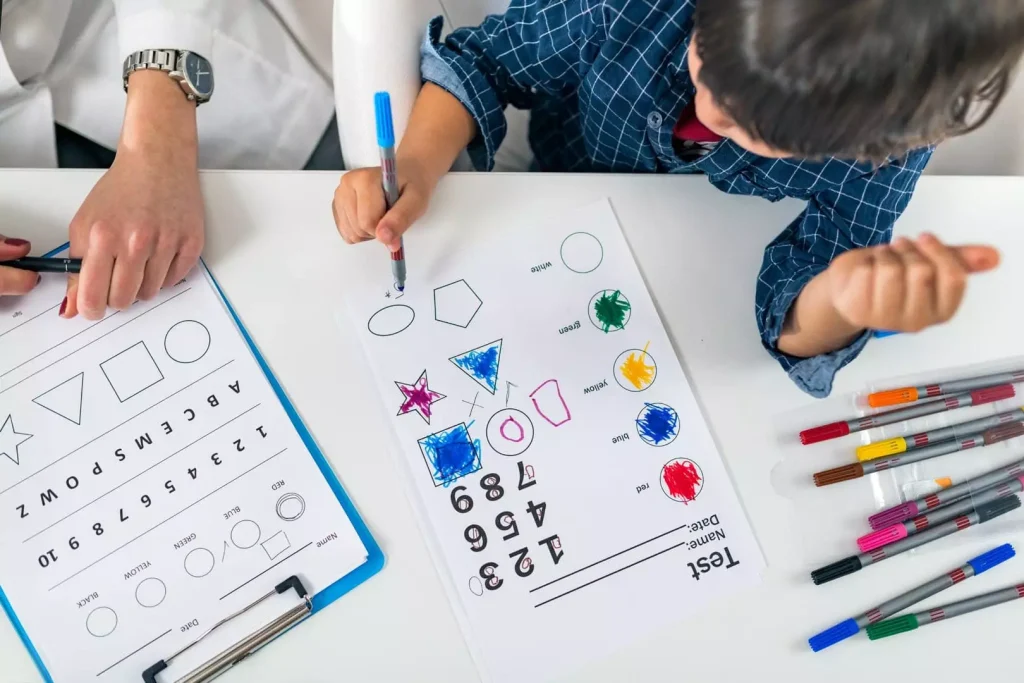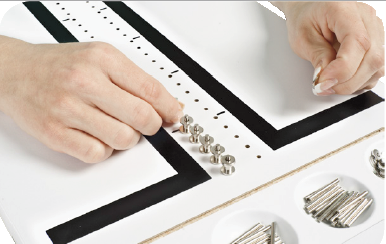Psychometric Assessment
Psychometric assessments are standardized tools used to measure individual differences across psychological traits and capacities. These assessments are now widely used in clinical, educational, organizational, and counseling settings.
We organize the assessment types under four core psychological dimensions:


Behavioural Dimention
The Behavioural Dimension focuses on evaluating how individuals act and respond in various situations. This includes observable actions, social interactions, emotional responses, and patterns of behavior in real-life or structured environments. Do not rely heavily on self-reports — they are often based on direct observation or third-party ratings.
This type of assessment is especially useful in clinical settings, educational environments, and organizational behavior analysis, particularly for individuals with developmental, emotional, or social difficulties.
Most Widely Used Behavioural Assessment Tools:
1. Achenbach System of Empirically Based Assessment (ASEBA)
Includes the Child Behavior Checklist (CBCL), Teacher’s Report Form (TRF), and Youth Self-Report (YSR)
Used globally for assessing emotional and behavioral problems in children and adolescents
2. Functional Behavior Assessment (FBA)
Identifies the purpose behind a behavior (e.g., to gain attention, escape a task)
Frequently used in special education and autism support programs
3. Behavior Assessment System for Children (BASC-3)
Evaluates behaviors and emotions in school-aged children and adolescents
Includes teacher, parent, and self-rating forms
4. Vineland Adaptive Behavior Scales (Vineland-3)
Measures adaptive behavior including communication, daily living skills, and socialization
Widely used in diagnosing intellectual and developmental disabilities
5. Conners Rating Scales (Conners 3)
Designed to assess ADHD and related behavioral issues in children and adolescents
Completed by parents, teachers, and youth
6. Direct Observation & ABC (Antecedent-Behavior-Consequence) Charting
Observational method where behaviors are recorded in context
Useful for identifying behavioral triggers and consequences
7. Social Skills Rating System (SSRS) / Social Responsiveness Scale (SRS-2)
Evaluates social behavior and skills
Often used in autism spectrum assessments
When Is Behavioural Assessment Used?
Diagnosing disorders like ADHD, ASD, conduct disorder, etc.
Developing behavioral intervention plans
Assessing social-emotional development
Workplace behavioral evaluations
Measuring treatment progress
Cognitive Dimention
The Cognitive Dimension evaluates an individual’s mental processes — how they perceive, think, learn, remember, solve problems, and make decisions. It is one of the most commonly assessed dimensions in both educational and clinical settings.
This dimension plays a crucial role in identifying intellectual strengths, learning difficulties, academic potential, and problem-solving abilities.
What Does It Assess?
General Intelligence (IQ)
Aptitude for specific skills
Academic achievement
Creative thinking and innovation
Memory and information processing
Key Areas & Widely Used Assessments

Used to assess overall intellectual functioning across multiple domains such as verbal reasoning, working memory, and processing speed.
Wechsler Scales:
WAIS (Wechsler Adult Intelligence Scale)
WISC (Wechsler Intelligence Scale for Children)
Stanford-Binet Intelligence Scales (SB5)
Raven’s Progressive Matrices (culture-fair test of abstract reasoning)
📚 2. Aptitude Tests
Measure the potential to succeed in specific tasks or learning environments. These are predictive rather than achievement-based.
Differential Aptitude Tests (DAT)
General Aptitude Test Battery (GATB)
Armed Services Vocational Aptitude Battery (ASVAB)
🧠 3. Achievement Tests
Assess knowledge and skills in particular academic areas, typically used in schools or for diagnosing learning disorders.
Wide Range Achievement Test (WRAT)
Woodcock-Johnson Tests of Achievement
Peabody Individual Achievement Test (PIAT)
🎨 4. Creativity Tests
Focus on divergent thinking, originality, and idea fluency.
Torrance Tests of Creative Thinking (TTCT)
Wallach and Kogan Creativity Tests
When Is the Cognitive Dimension Assessed?
Identifying giftedness or intellectual disabilities
Diagnosing learning disorders (e.g., dyslexia, dyscalculia)
School or college placement decisions
Understanding cognitive decline in aging or brain injuries
Career and aptitude guidance
Evaluating executive functions (planning, inhibition, flexibility)
Why Is It Important?
Helps determine how a person learns best
Aids in creating individualized educational or treatment plans
Can inform interventions for cognitive enhancement
Provides insight into intellectual development across the lifespan


Psychomotor Dimention
The Psychomotor Dimension refers to the assessment of the coordination between cognitive processes and physical movement. It evaluates how well a person can perform tasks that require manual dexterity, fine motor skills, hand-eye coordination, and motor speed.
This dimension is crucial for understanding neuromotor functioning, especially in contexts like occupational therapy, rehabilitation, child development, and pre-employment screenings for roles involving physical precision.
What Does It Assess?
Fine and gross motor coordination
Manual dexterity
Reaction time and motor speed
Hand-eye coordination
Motor planning and control
Most Widely Used Psychomotor Assessments
✋ 1. Crawford Small Parts Dexterity Test
Measures fine motor skills and manual dexterity
Used in industrial settings, rehabilitation, and occupational therapy
🧪 2. Purdue Pegboard Test
Assesses finger dexterity and bimanual coordination
Frequently used in vocational evaluation and neurological exams
📏 3. Grooved Pegboard Test
Tests eye-hand coordination, manual dexterity, and speed
Sensitive to brain injuries and neurological conditions
⏱ 4. Finger Tapping Test
Measures motor speed by counting rapid finger taps
Used to assess brain damage, particularly in the motor cortex
🧠 5. Bender Visual-Motor Gestalt Test
Evaluates visual-motor integration
Often used in neuropsychological screening of children and adults
🚶 6. Movement Assessment Battery for Children (MABC)
Identifies motor difficulties in children (e.g., developmental coordination disorder)
🧍 7. Bruininks-Oseretsky Test of Motor Proficiency (BOT-2)
A comprehensive assessment of fine and gross motor skills in children and adolescents
When Is the Psychomotor Dimension Assessed?
Child development screening
Neuropsychological evaluations
Diagnosing developmental coordination disorder, cerebral palsy, etc.
Assessing motor recovery after stroke or injury
Job screening for manual tasks (factory work, surgery, mechanics)
Why Is It Important?
Helps detect motor skill delays or impairments
Supports therapists and doctors in designing personalized treatment plans
Useful in career assessments for roles that demand high coordination
Identifies neurological issues affecting motor functions
Affective Dimention
The Affective Dimension focuses on emotions, motivations, attitudes, values, interests, and personality traits. It examines the internal emotional world of an individual and how these affect their thoughts, behaviors, and decisions.
This dimension is especially important in clinical psychology, career counseling, and personality assessment. It helps in understanding how a person feels, what drives them, what they believe in, and how they view themselves and others.
What Does It Assess?
Emotional stability and regulation
Personality traits and emotional tendencies
Motivations and preferences
Attitudes toward self, others, and the world
Personal values and life goals
Interests related to work, study, or leisure
Most Widely Used Affective Assessments
🧠 1. Personality Assessments
Used to evaluate enduring patterns of thinking, feeling, and behaving.
Minnesota Multiphasic Personality Inventory (MMPI-2)
16 Personality Factors (16PF)
Big Five Inventory (BFI)
Eysenck Personality Questionnaire (EPQ)
Myers-Briggs Type Indicator (MBTI) (used in non-clinical settings)
💡 2. Interest Inventories
Assess preferences related to work, education, and hobbies.
Strong Interest Inventory (SII)
Holland’s Self-Directed Search (SDS)
Campbell Interest and Skill Survey (CISS)
🎯 3. Values Assessment
Measures the guiding principles and beliefs that shape choices.
Rokeach Value Survey
Schwartz Value Survey (SVS)
✅ 4. Attitude Scales
Gauge how individuals evaluate people, events, or ideas.
Likert Scale (e.g., “strongly agree” to “strongly disagree”)
Thurstone Scale
Semantic Differential Scale
When Is the Affective Dimension Assessed?
During clinical diagnosis of emotional or personality disorders
In career guidance to align personality, values, and interests with future goals
For relationship and marriage counseling
In organizational settings for team compatibility
To explore self-concept and motivation in adolescents and adults
Why Is It Important?
Reveals emotional patterns affecting mental health
Informs treatment and therapy plans
Supports self-awareness and personal growth
Guides career and life decisions based on interests and values
Helps match individuals with suitable roles or environments


